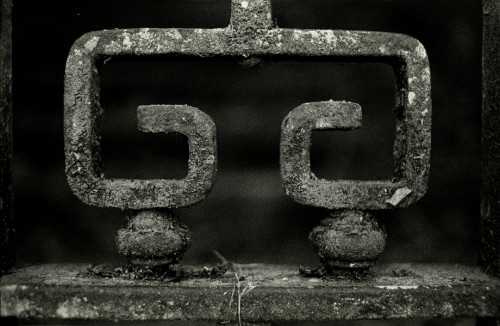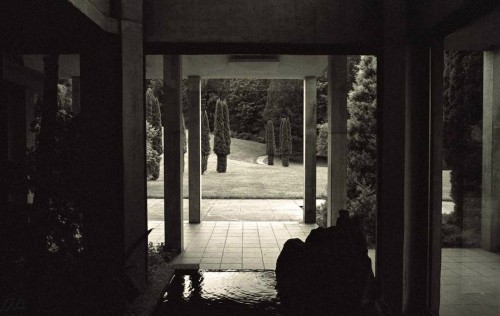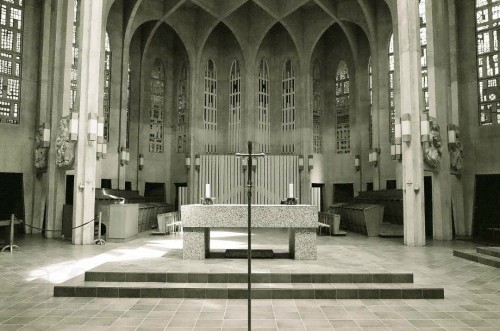
Architecture
02.10.13 - Hycroft Gate
- Author: DJL
- Categories: Architecture, Education, Nature
- Comments: 0
- Tags: alexander mcrae, general mcrae, hycroft manor, Leonard Frank, shaughnessy, university womens club, Vancouver
After General Alexander Duncan McRae settled in Vancouver in 1907 he build a home for his family in Shaughnessy which became known as Hycroft Manor. The home was built on the brow of a hill on 5 1/2 acres.
 Hycroft Manor 1927 Leonard Frank Photographer [Vancouver Archives]
Hycroft Manor 1927 Leonard Frank Photographer [Vancouver Archives]
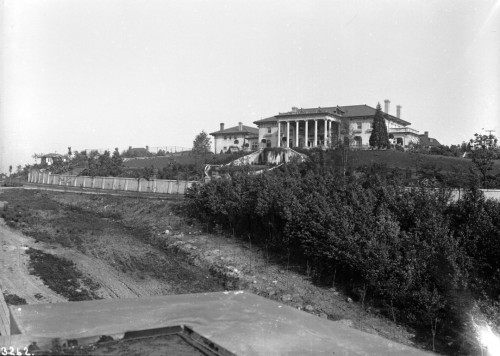 Hycroft Manor 1912 Stuart Thomson Photographer [Vancouver Archives]
Hycroft Manor 1912 Stuart Thomson Photographer [Vancouver Archives]
Designed by Vancouver architect Thomas Hooper, the land and construction upon which the 30 room 3 story structure was build, cost $109,00 in 1911. After the death of his wife Blanche McRae in 1942, Hycroft Manor was donated to the Government of Canada. During the war the property was the site of the Shaughnessy Military Hospital, and served as an auxiliary facility for 18 years. It was eventually taken over by the University Women’s Club in 1962 who manage the facility to this day.
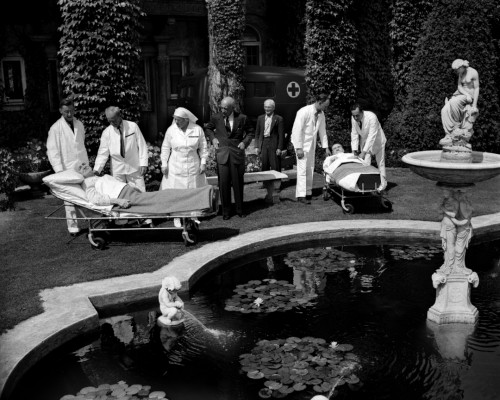 Shaugnessy Military Auxillary 1943 Williams Bros. Collection [Vancouver Archives]
Shaugnessy Military Auxillary 1943 Williams Bros. Collection [Vancouver Archives]
Although this unused gate suggests a prohibitive state of inactivity, the vibrant green suggests quite another story. The University Women’s Club of Vancouver has been promoting education, rights and opportunities for women for over a 100 years.
01.09.13 - L’Institut de Monde Arabe
- Author: DJL
- Categories: Architecture, Travel
- Comments: 0
- Tags: Arabe, Architecture, Institut de Monde Arabe, Jean Nouvel, Paris, research, spiritual values
The brilliant metallic screen at the Institut de Monde Arabe, with it’s moving geometric motifs, is visible through the building’s exterior glass wall. The 240 motifs contain photo-sensitive mechanically controlled apertures, which act as a sophisticated ‘brise soleil’. The photoelectric lenses automatically open and close to control the amount of sunlight and heat entering the building. The effect is reminiscent of Arabic latticework and creates beautiful filtered light, which is often represented in Islamic architecture.
The IMA, founded in Paris in 1980, is an organization of 18 Arab countries and France. It was established to research and disseminate information about the Arab world, its cultural and spiritual values.
 Designed by french architect, Jean Nouvel – Rue des Fossés, Saint Bernard, 5eme Arrondissement, Paris
Designed by french architect, Jean Nouvel – Rue des Fossés, Saint Bernard, 5eme Arrondissement, Paris
23.07.13 - Westminster Abbey
- Author: DJL
- Categories: Architecture
- Comments: 0
- Tags: Asbjørn Gåthe, British Columbia, Mission, Swiss American Congregation, Westminster Abbey
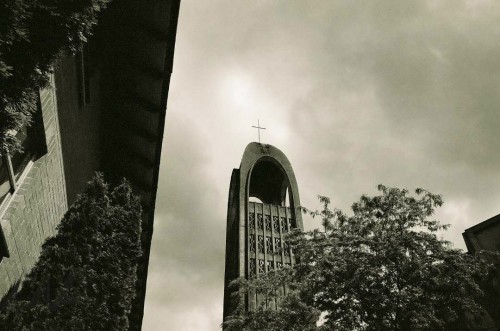 Westminster Abbey is a community of Benedictine monks in Mission, British Columbia, established in 1939 from the Abbey of Mount Angel, Oregon. The Abbey is home to the Seminary of Christ the King and member of the Swiss American Congregation within the Benedictine Confederation. The space, with 80 hectares of land, comprises a monastery, a seminary high school, a college of theology, a chapel, a guest house, and a large working farm. The monks and seminary students follow the Benedictine tradition of living by the ‘fruit of one’s labour’. It is a pastoral way of life which aims to make the community as self-sufficient as possible.
Westminster Abbey is a community of Benedictine monks in Mission, British Columbia, established in 1939 from the Abbey of Mount Angel, Oregon. The Abbey is home to the Seminary of Christ the King and member of the Swiss American Congregation within the Benedictine Confederation. The space, with 80 hectares of land, comprises a monastery, a seminary high school, a college of theology, a chapel, a guest house, and a large working farm. The monks and seminary students follow the Benedictine tradition of living by the ‘fruit of one’s labour’. It is a pastoral way of life which aims to make the community as self-sufficient as possible.
Construction began on the new abbey in 1953 and was designed by the Norwegian architect, Asbjørn Gåthe. The monks began to live on the site in 1954; buildings were gradually added, culminating with the abbey church in 1982. Located at the top of a hill, northeast of the town of Mission, the abbey has a commanding view up the Fraser River valley.

